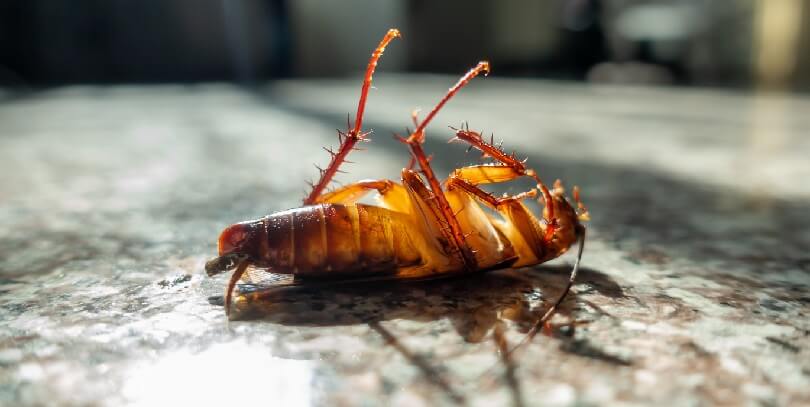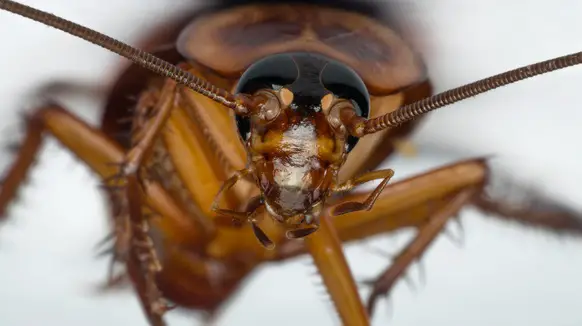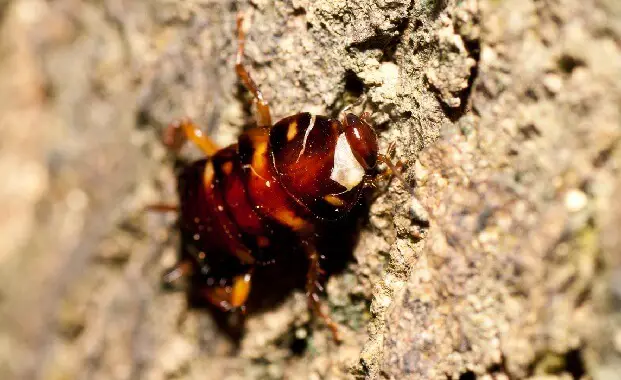Do Roaches Sleep On Their Back?

Contrary to popular belief, cockroaches do not sleep on their backs. Finding a cockroach in such a position typically indicates it’s nearing death. These nocturnal creatures peak in activity around midnight, with reduced action during the latter part of the night. So, an upside-down roach is not resting—it’s likely in distress.
Cockroach Sleep Overview
| Aspect | Detail |
|---|---|
| Do Roaches Sleep? | Yes, they have a circadian rhythm. |
| Sleeping Position | Not on their back; they lie flat. |
| Sleeping Duration | Typically 8-10 hours. |
| Activity States | Locomotion, Immobility, Limb/Antenna Movement. |
| Effect of Light | Can disrupt their sleep cycle but doesn’t harm them. |
| Roaches on Their Back | Indicative of the effect of insecticides, not natural sleep. |
Cockroach Behavior
Cockroaches are nocturnal creatures, which means they are most active during the night. During the day, they prefer to hide in dark and moist places. When they do rest or “sleep,” they do it in a state called torpor. Torpor is not the same as sleep in mammals, but it’s a period of reduced activity where the insect remains stationary and is less responsive to stimuli.
Cockroaches tend to rest in a position that offers them the most protection. This usually means hiding in cracks or crevices, with their bodies pressed against a surface. Their natural resting position is on their legs, tucked into a safe space.

How To Get Rid Of Roaches In Carpet
Finding a roach on its back often indicates a problem for the roach, not a state of relaxation. Here are some reasons why roaches end up on their backs:
- Chemical Exposure: Roaches exposed to insecticides may experience nervous system disruption. This can lead to spasms, causing them to flip onto their backs. They may not have the strength or coordination to right themselves and often die in this position.
- Physical Trauma: If a roach has suffered an injury, it might end up on its back. This is especially common if they’ve been stepped on or crushed, but not enough to kill them immediately.
- Old Age: Like all living beings, Roach age and become weaker over time. An old or sick roach may have difficulty righting itself if it somehow ends on its back.
- Slick Surfaces: Roaches have difficulty moving on extremely smooth surfaces. If they find themselves on a surface where they can’t get a good grip, they may inadvertently flip onto their backs and struggle to turn over.
Do Roaches Sleep?
As mentioned earlier, cockroaches enter a state of torpor rather than sleep as we know it. During this state:
- Reduced Activity: They aren’t actively searching for food or mates or avoiding predators.
- Lowered Metabolic Rate: Their metabolism drops, conserving energy.
- Decreased Responsiveness: While in torpor, a roach will be less responsive to stimuli but can quickly “wake up” if threatened.

Why Do Roaches Lay On Their Backs?
Cockroaches lying on their backs is often a sign of distress or exposure to insecticides. When roaches are exposed to certain chemicals, their nervous systems can be affected, leading to muscle spasms which can cause them to end up on their backs.
Additionally, slick surfaces, physical trauma, or old age can also lead to a roach finding itself on its back. In such situations, they often lack the strength or the coordination to flip themselves over, especially if the effect of insecticides is taking a toll on their neural functions.
Do Cockroaches Like Carpet?
Cockroaches do not have a specific preference for carpets, but they are attracted to the warmth, darkness, and food crumbs or organic materials that can be found within carpet fibers.
Carpets can offer a suitable environment for cockroaches to hide, especially if it is damp or has food particles trapped in it. Regular vacuuming and cleanliness can deter cockroaches from being attracted to carpets.
Conclusion
In conclusion, cockroaches do not sleep on their backs. When they are found in this position, it’s typically indicative of distress, exposure to chemicals, or other adverse conditions.
Understanding this behavior can aid pest control efforts and illuminate some intriguing aspects of cockroach biology and behavior. The next time you see a roach on its back, rather than assuming it’s taking a nap, it’s more accurate to deduce that it’s in a compromised situation.

James E. Butkovich, Pest control maven with a knack for eco-friendly & Chemical solutions. Blogger with a mission to make homes pest-free, one post at a time.